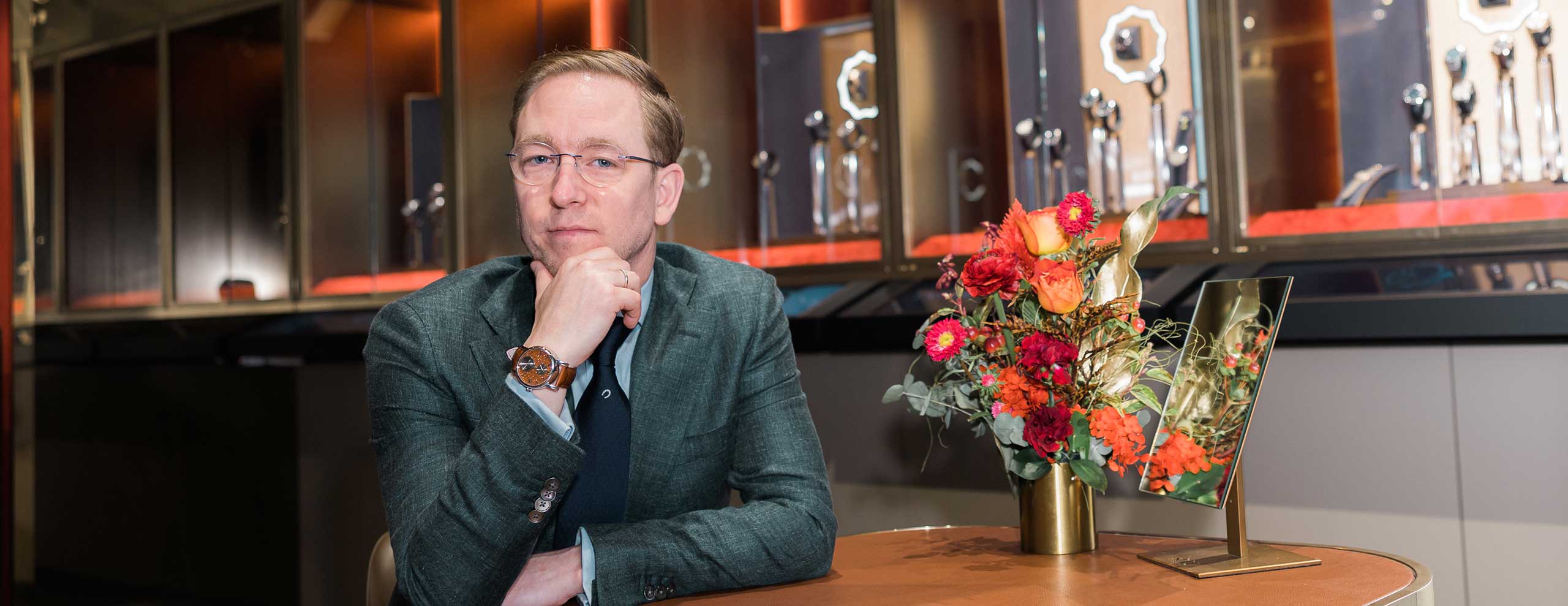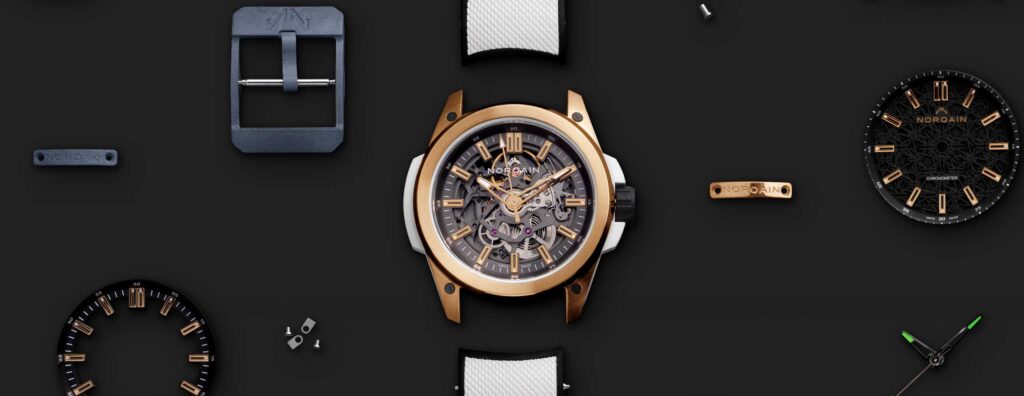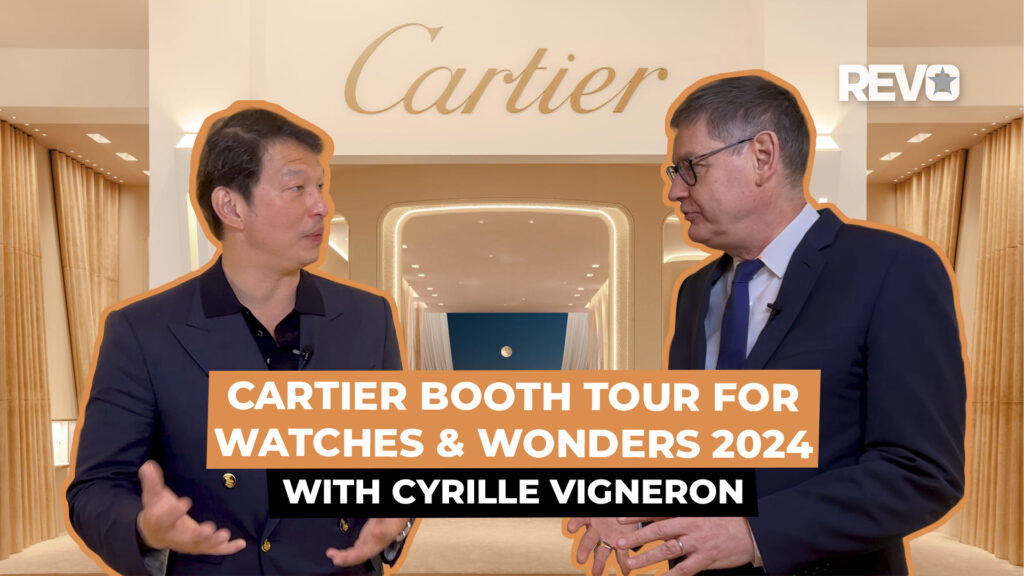Pim Koeslag, the former technical director of Frederique Constant and current owner of Christiaan van der Klaauw, on his transition from being a watchmaker to a brand owner, the continued practice of hand-cutting gears at CVDK and the brand’s landmark miniature mechanical planetarium.
Astronomical displays are a unique breed of complications that bridges the gap between the phenomena in the sky and our tangible, everyday experience on Earth. Mirroring cosmic events such as the positions of celestial bodies, moon phases, or the movement of the stars, they connect us with the grandeur of the universe and reflect our quest for meaning in the vastness of existence. Today, Christiaan van der Klaauw is the only watch company that dedicates itself entirely to the art of astronomical timekeeping.
The brand was founded in 1974 by the eponymous Dutch clockmaker whose passion for astronomy was nurtured at the esteemed Leiden Observatory, one of the oldest observatories in the world. His journey began with a focus on highly ornate astronomical clocks such as the Real Moon, a pendulum clock featuring a spherical moon and solar declination and the Pendule Variable, a table clock that combined a rotating sun and moon with an astrolabe. In 1989, he was admitted to the Académie Horlogère des Créateurs Indépendants (AHCI) and later in 1994, he unveiled his first astronomical wristwatch. Notably, he presented his most acclaimed model in 1999, the Planetarium wristwatch, equipped with the world’s smallest mechanical planetarium.
With no family successor, Van der Klaauw entrusted the future of his brand to close friends and designers Daniël Reintjes and Maria Reintjes van Laar in 2009. They honored his legacy by focusing solely on astronomical watches. One of the most significant models launched since then was the Real Moon Joure, which remains to date the most accurate spherical moon phase display, accumulating a day’s error in 11,000 years. The brand also collaborated twice with Van Cleef & Arpels on the Midnight Planétarium Poetic Complication in 2014 and in 2018, the Lady Arpels Planétarium, which took home the Ladies’ Complication Watch Prize at the Grand Prix d’Horlogerie de Genève that year. In 2021, the CVDK Planetarium watch inspired by the world’s oldest working orrery, crafted by Eise Eisinga in Franeker, Netherlands, won the Calendar & Astronomy category at the GPHG.
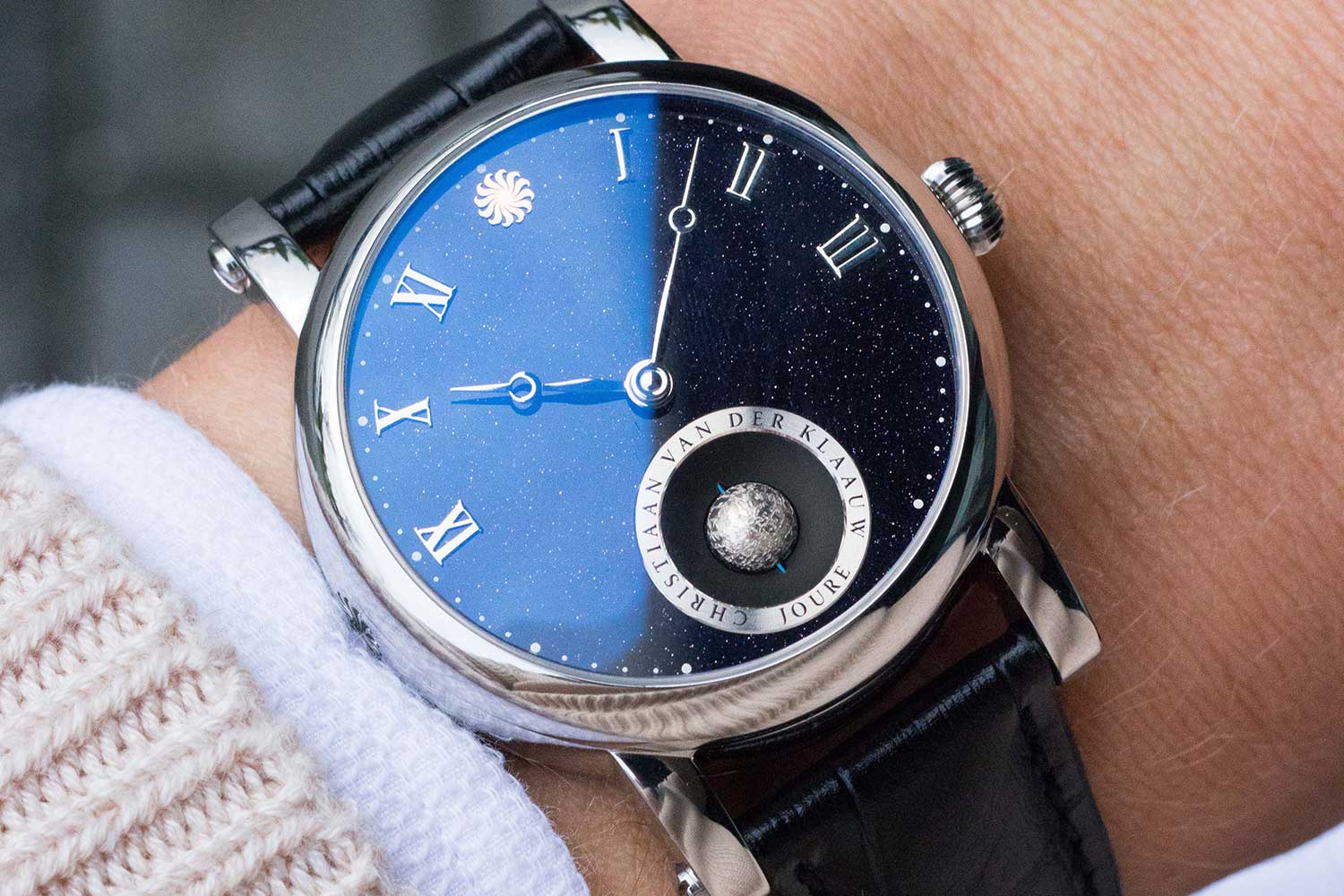
The Real Moon Joure boasts the most accurate spherical moon phase display, deviating by one day in 11,000 years
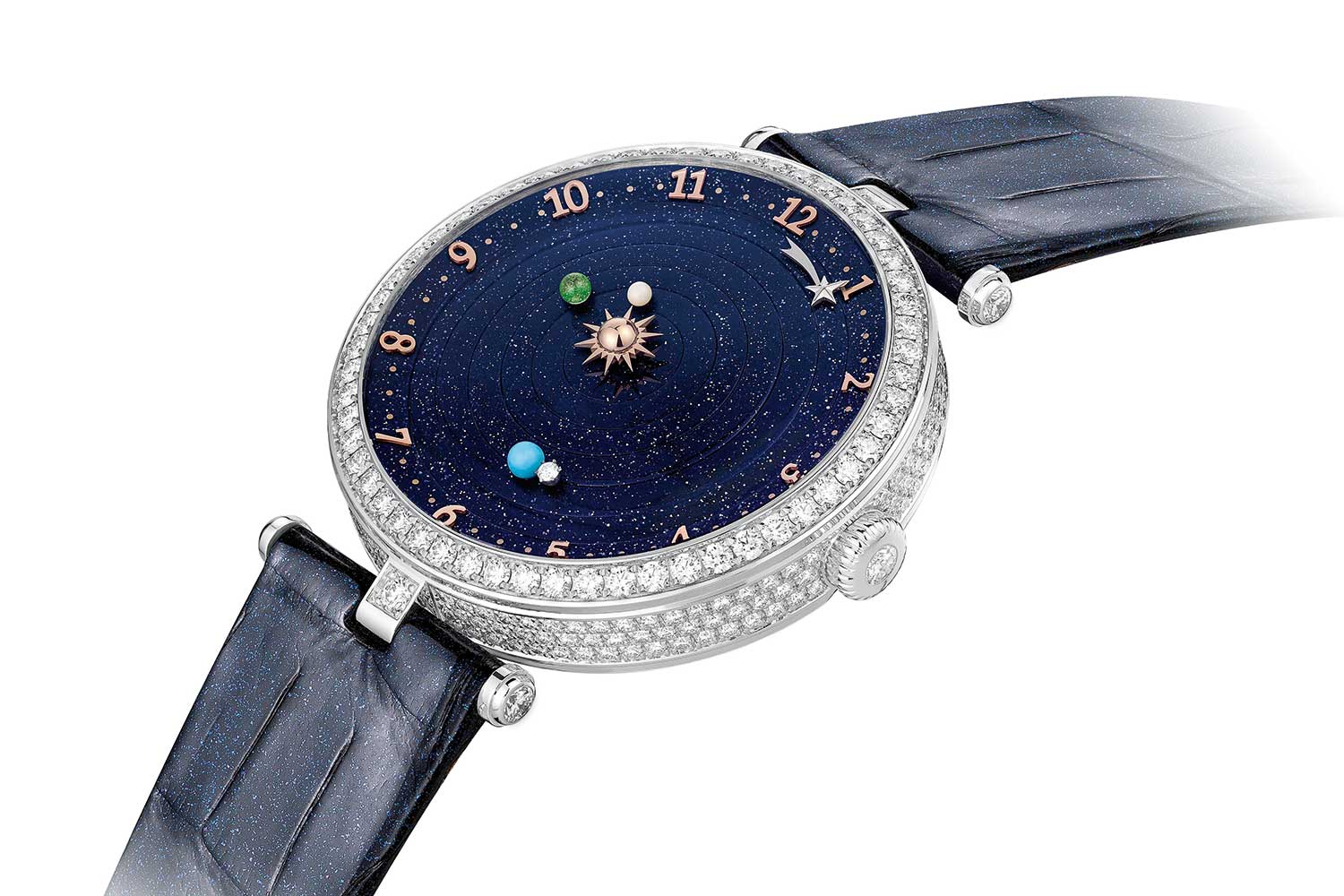
Van Cleef & Arpels Lady Arpels Planétarium
In 2022, Pim Koeslag became the majority shareholder of Christiaan van der Klaauw and assumes the role of CEO. Koeslag’s journey in watchmaking began when he was recruited by Peter Stas, founder and CEO of Frederique Constant, contributing significantly to transforming Frédérique Constant into the industrial powerhouse it is today. Upon graduating from watchmaking school in Amsterdam, Koeslag famously declined an offer from Patek Philippe and took on a pivotal role alongside Stas, developing some 30 in-house movements including perpetual calendars, tourbillons and more recently the Monolithic. At the same time, he co-founded Ateliers deMonaco, where his passion for high complications ran free.
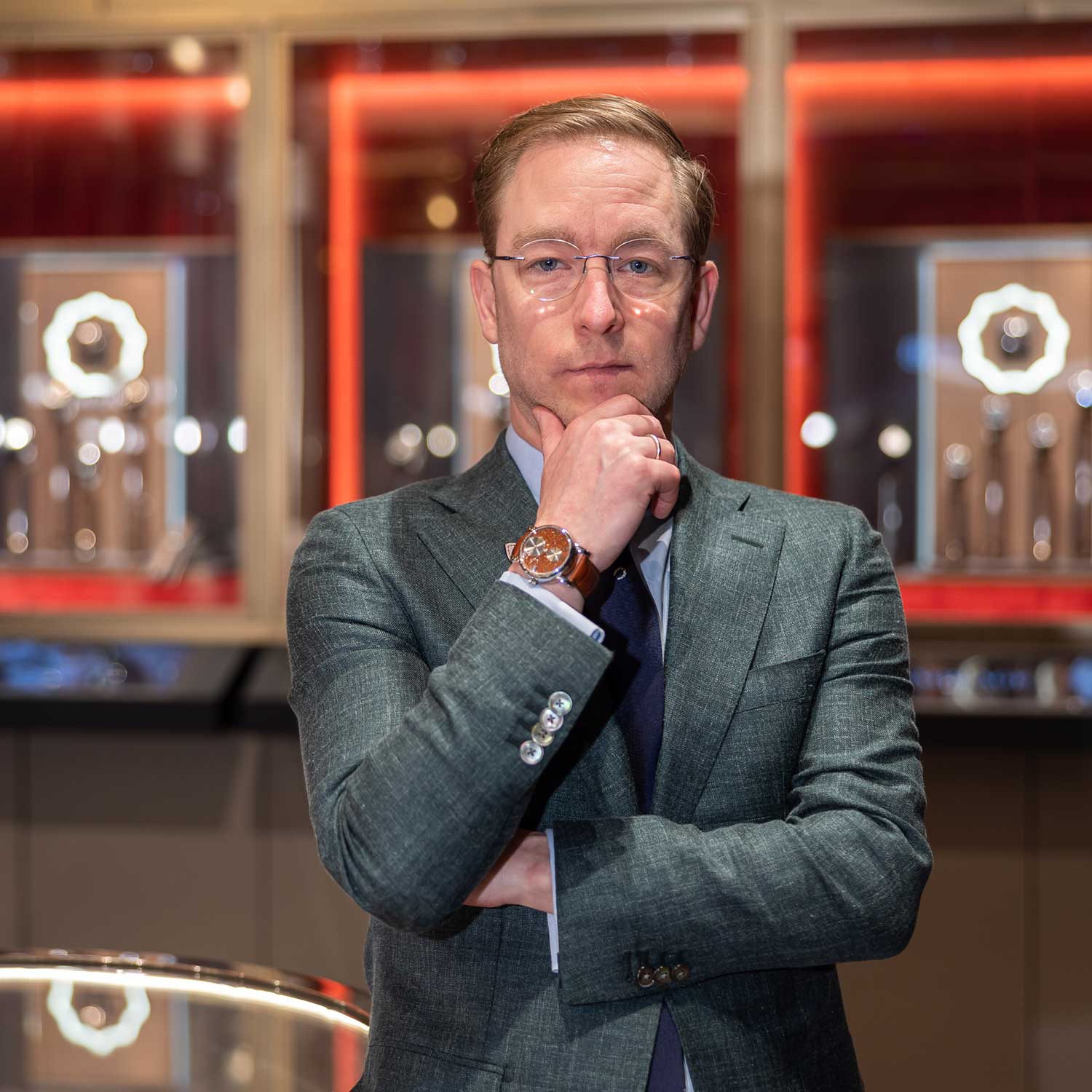
Pim Koeslag at Sincere's SHH boutique in Singapore, wearing the Planetarium Dunes Of Mars Bi-Colour SHH edition with a red aventurine dial
We caught up with Koeslag during his recent visit to Singapore to launch a limited edition CVDK Planetarium for Sincere SHH.
How did you end up acquiring Christiaan van der Klaauw?
After working in the watch industry in Geneva for two decades, my family and I made the decision to return to the Netherlands where my wife and I were born. Even while settling back, my work in Geneva continued, resulting in a routine of flying there every Monday and returning home to my family by Thursday. While this arrangement was nice for a while, I found myself contemplating the future and considering the possibility of embarking on a new business venture.
I heard from a colleague that Daniël and Maria Reintjes, the previous owners of Christiaan van der Klaauw, were seeking the next generation to take over. I reached out to them, and the process of becoming the majority shareholder happened relatively swiftly. This transition was very emotional for me because I met Christiaan himself 25 years ago. He is now 80.
During my time at watchmaking school in Amsterdam, he showcased his creations, and I fell in love right away. So, I visited him at his house, or rather his garage, because everything – all the machines and his company were in his garage back then and I loved it even more.
After completing my watchmaking education, I did some internships at Grönefeld and Patek Philippe but the first thing I did was to return to Christiaan to express my desire to work with him. At that point, he was still working alone. However, he advised me to gain more experience in Geneva first, suggesting that after a year or two, we can start working together. So I did, and after 20 years, I came back.
What is it like transitioning from a watchmaker/ technical director to a business owner?
Of course, it’s different. But back in 2002, when I first started at Frederique Constant, I was the first watchmaker. There were only 10 people in the company. It was very small. But Peter Stas and Aletta gave me all the freedom that I can hope for. Initially, it began with the technical aspects, then gradually they left me in charge of the workshop, followed by the product and later also the design of Frederique Constant, Alpina and Atelier deMonaco watches. But also, I co-founded Atelier deMonaco, and later assumed the role of CEO, and it was like my own company. The only difference is that there was less pressure because it’s a big group. But still, it felt like it was my own company. This experience was the perfect training ground, allowing me to steer a company and make mistakes every once in a while.
Christiaan van der Klaauw is very different from Frederique Constant in terms of manufacturing and production, what was the most eye-opening aspect since you took over?
At Christiaan van der Klaauw, our approach to craftsmanship remains the same as Christiaan’s methods from 20 years ago. Wheels and pinions are still made by hand from scratch. At Frederique Constant, it was industrialised, meaning we designed the wheel but then we engage specialists for large-scale production. But at Christiaan van der Klaauw, it is really done by hand where we start with a bar of brass and we cut the teeth one by one. We cut slices, and part by part, we build a Planetarium. This is something I have never seen in the watch business before.
You don’t use hobbing or profile turning machines?
No, everything is cut by hand, teeth per teeth. So, you can imagine that the Planetarium complication comprises 45 wheels and 700 teeth, which means our watchmakers must cut the brass bar 700 times to create it. I knew of course that Christiaan was doing it this way when I first met him but seeing that they are still doing it like this – it’s amazing. And I want to keep that.
How big is the team and workshop today?
We recently moved to a very nice 16th century building nestled in a fortress village. And it’s 20 minutes from the airport of Amsterdam so it’s really convenient. Presently, our team consists of seven watchmakers. It’s still a relatively modest size. We just hired some new watchmakers from the Richemont group, Grönefeld and Renaud & Papi. So they are all skilled at high-end watchmaking and we’re ready for the next step.
Can you elaborate on the parts that are produced internally at the moment?
We are mostly focused on producing gear trains, pinions, wheels and astronomical modules internally because that is our specialty. Of course, it would be nice if we can eventually make cases and dials ourselves, but for now we will only focus on producing movement parts.
Being a watchmaker yourself who has developed both movements and complications, how do you intend to develop the brand further?
The first thing I introduced was a watch that Christiaan introduced 20 years ago, and it’s called the Ariadne. It is a chronograph with a full calendar. And this was more entry level. But we really focused on the finishing. The rotor features guilloché done by hand. The finishing of the dials is very beautiful. They are complex dials with 26 components. And so that was the first step – to put something really powerful in the in the entry level because I really want to make beautiful watches for everybody. And that could also be the first step to another beautiful astronomical timepiece.
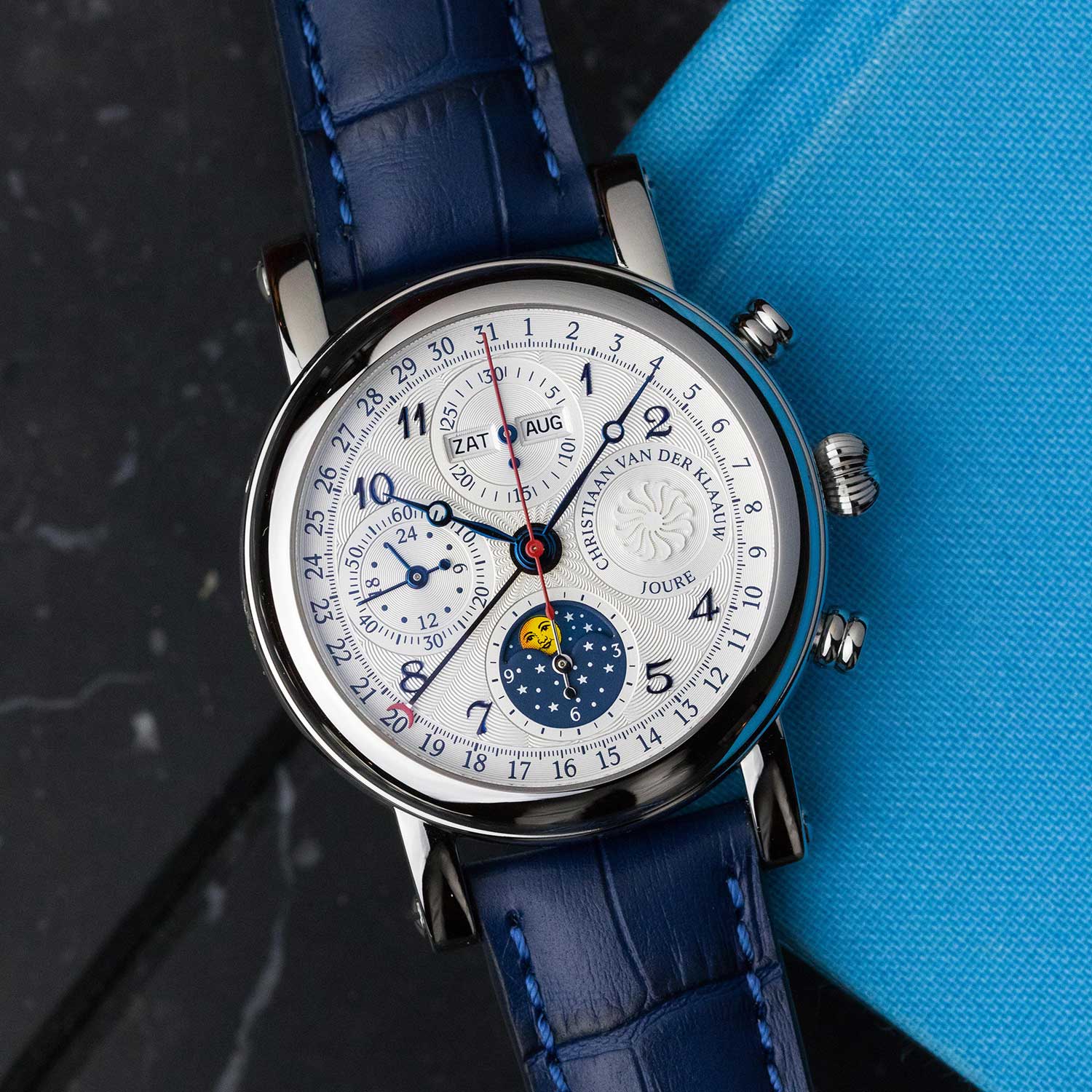
The Ariadne, a chronograph with a complete calendar and 24-hour indicator
But the next step, which we started on right away as well, is to put something on the higher end of the collection. But then, of course, it’s much more complicated and takes more time. I can’t tell you what it is yet, but it’s very, very complex with over 400 components and it is in our DNA of astronomical complications.
At the same time, I’m also working on a new manufacture movement to replace the Swiss base movements that we’re currently using.
Throughout your time at Frederique Constant and Atelier deMonaco, you’ve always had that drive to develop complications. Are there still unfulfilled ambitions?
I know I’ve done almost everything you can do in the watch industry in terms of complications. But when it comes to astronomy, it’s another world. If we really want to do a new thing every year and if we have the time and capacity, we would be able do it for a hundred years. But we don’t have the capacity, so we have to choose the best ones. But there are so many things. You mentioned one earlier [sunset and sunrise]. That’s a beautiful complication and it’s also something that fits our DNA. It’s been done a couple of times but there are so many things you can add, improve, or change.
Can you explain the mechanism in the Planetarium?
The Planetarium is a solar system on the wrist, and our planetarium is the smallest mechanical planetarium in the world. At its heart lies the sun, surrounded by six revolving planets. It showcases the real-time positions of the planets and also mimic their actual speeds. It is directly linked to the calendar at 12 o’clock.
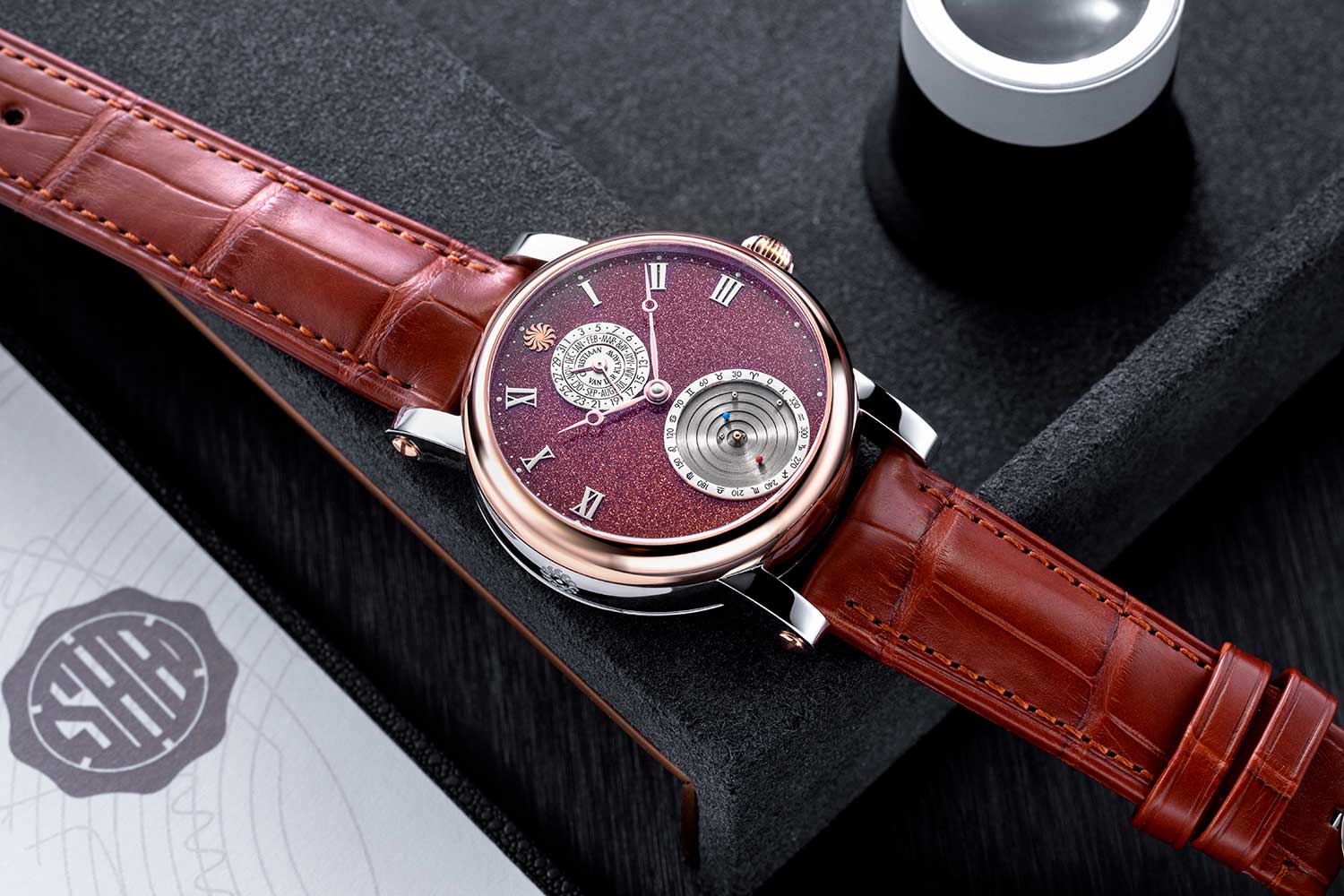
The Planetarium Dunes of Mars Bi-Colour SHH Edition limited to 8 pieces
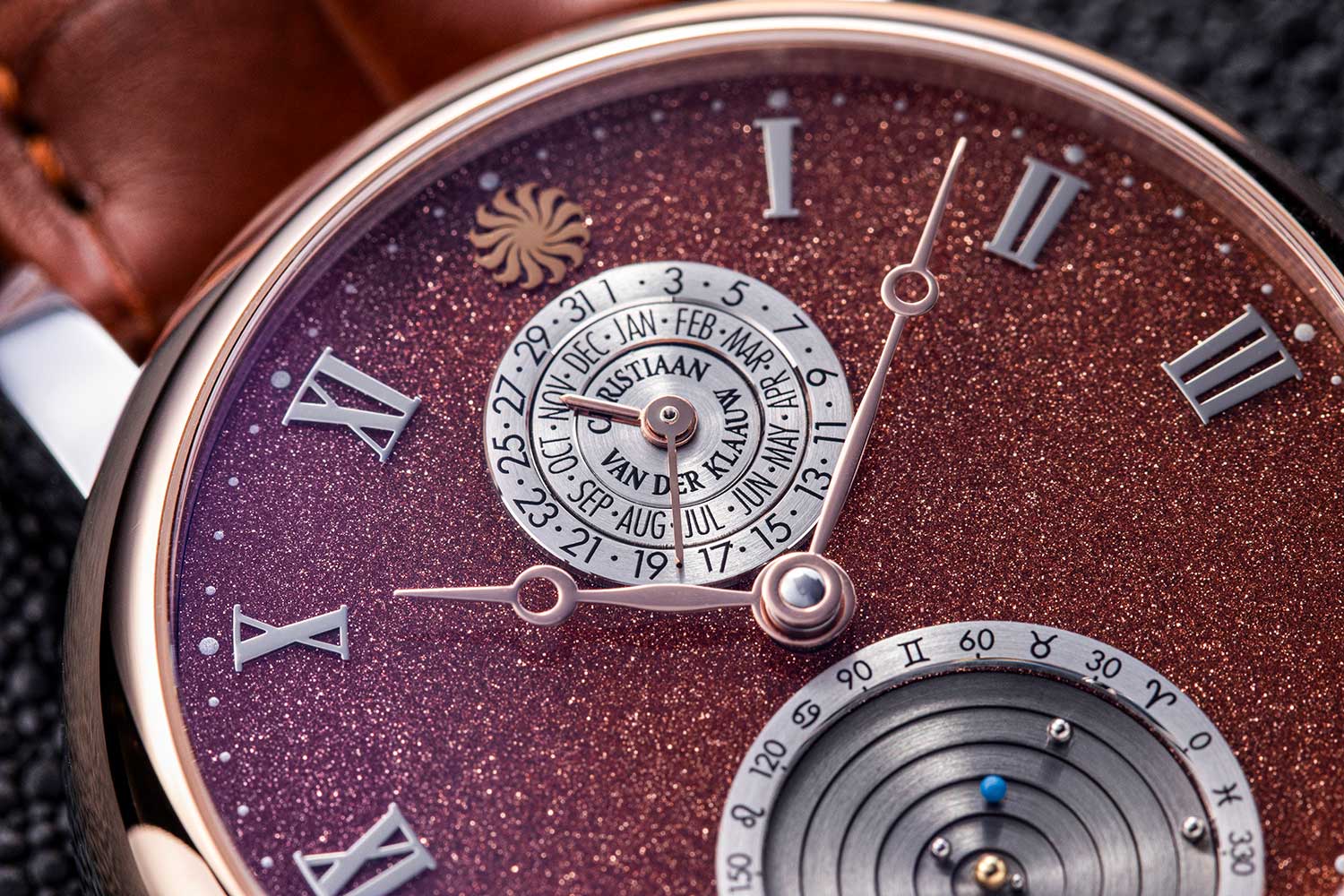
An analog date and month display at 12 o'clock
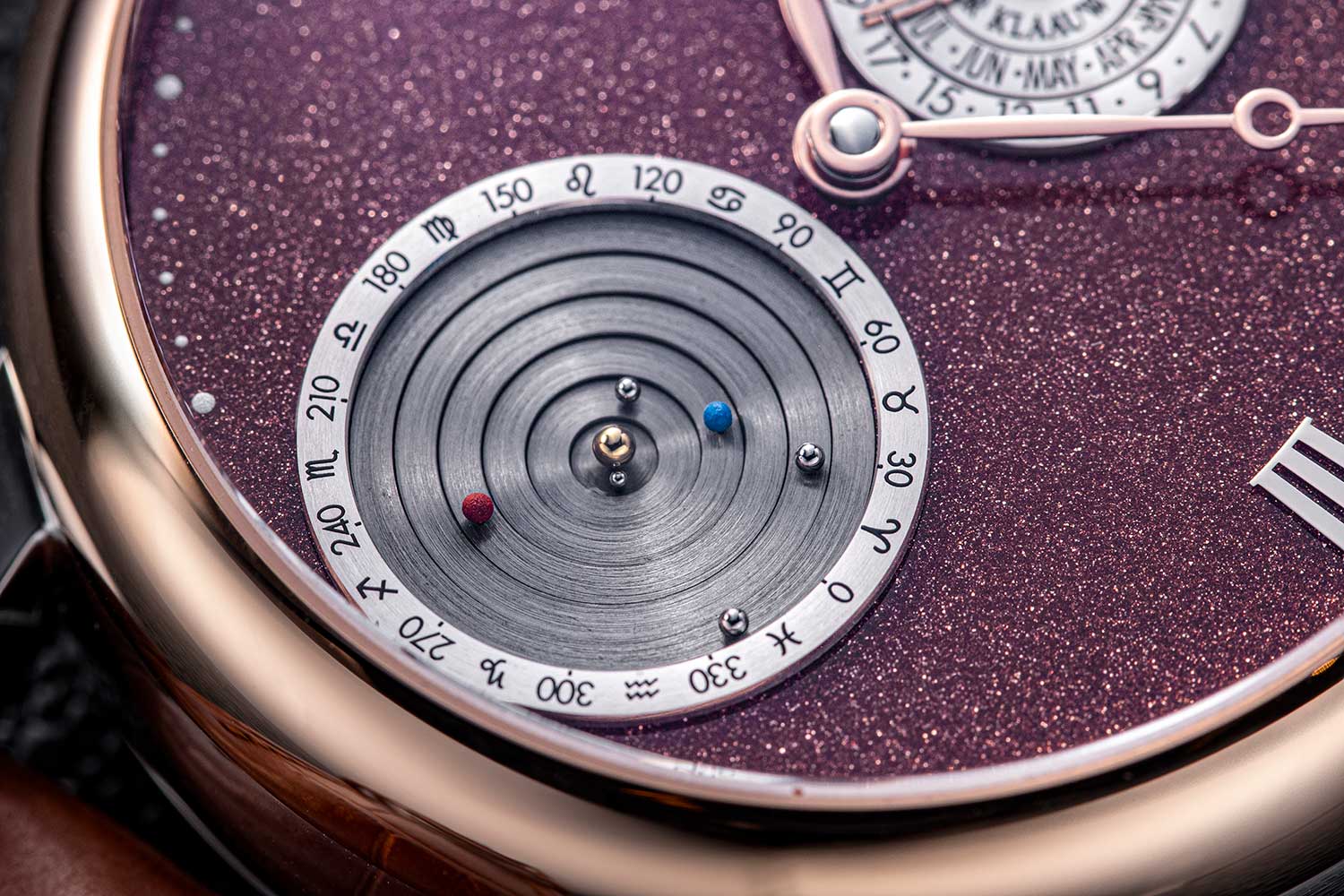
The miniature planetarium displays the orbits of Mercury, Venus, Earth, Mars, Jupiter and Saturn around the Sun in real time
Mercury takes the innermost orbit, completing a revolution in 88 days. Moving outward, the pace gradually decelerates — Venus follows, then Earth, marking the passage of a year. On the farthest perimeter is Saturn which makes a complete revolution in 29 and a half years. It is very, very slow. To achieve this demultiplication to slow the system down, we added 45 wheels with 700 teeth in total, cut by hand.
There’s no patent for this?
No. I think when Christiaan developed it 25 years ago, he did not have a budget to get a patent.
Let’s backtrack a little and start with the hour wheel so we get a clearer idea of how everything is achieved on such a small scale.
Yes, it starts with the hour wheel, which completes a single revolution every 12 hours. Then we demultiply to get the speed of a monthly cycle, which is the date function. Then, again, we demultiply until we have the year, which gives us the month indicator at 12 o’clock. Then we reduce the speed a little further to have the 88-day cycle for Mercury.
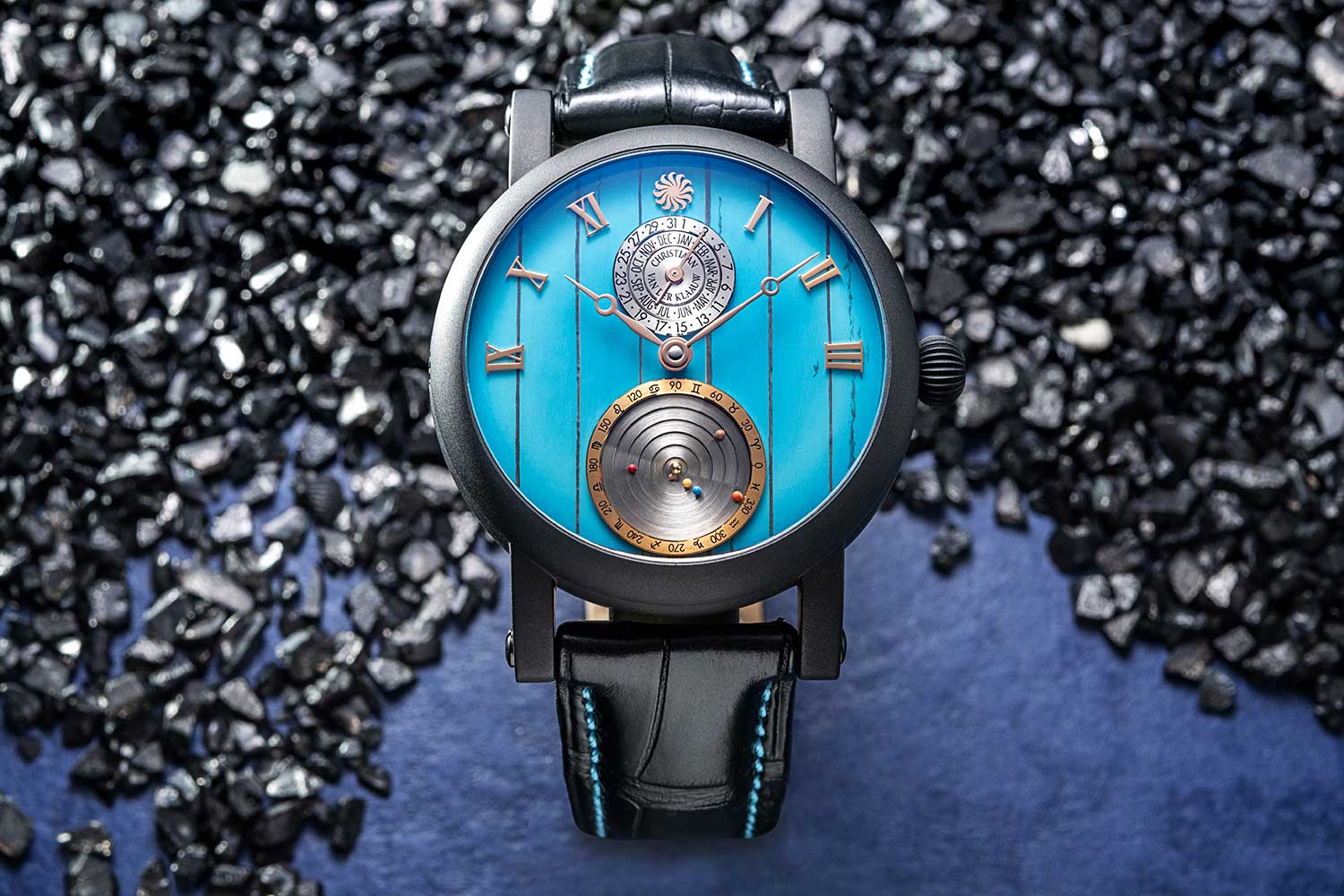
Planetarium Eise Eisingna Black DLC SHH Edition, limited to 8 pieces
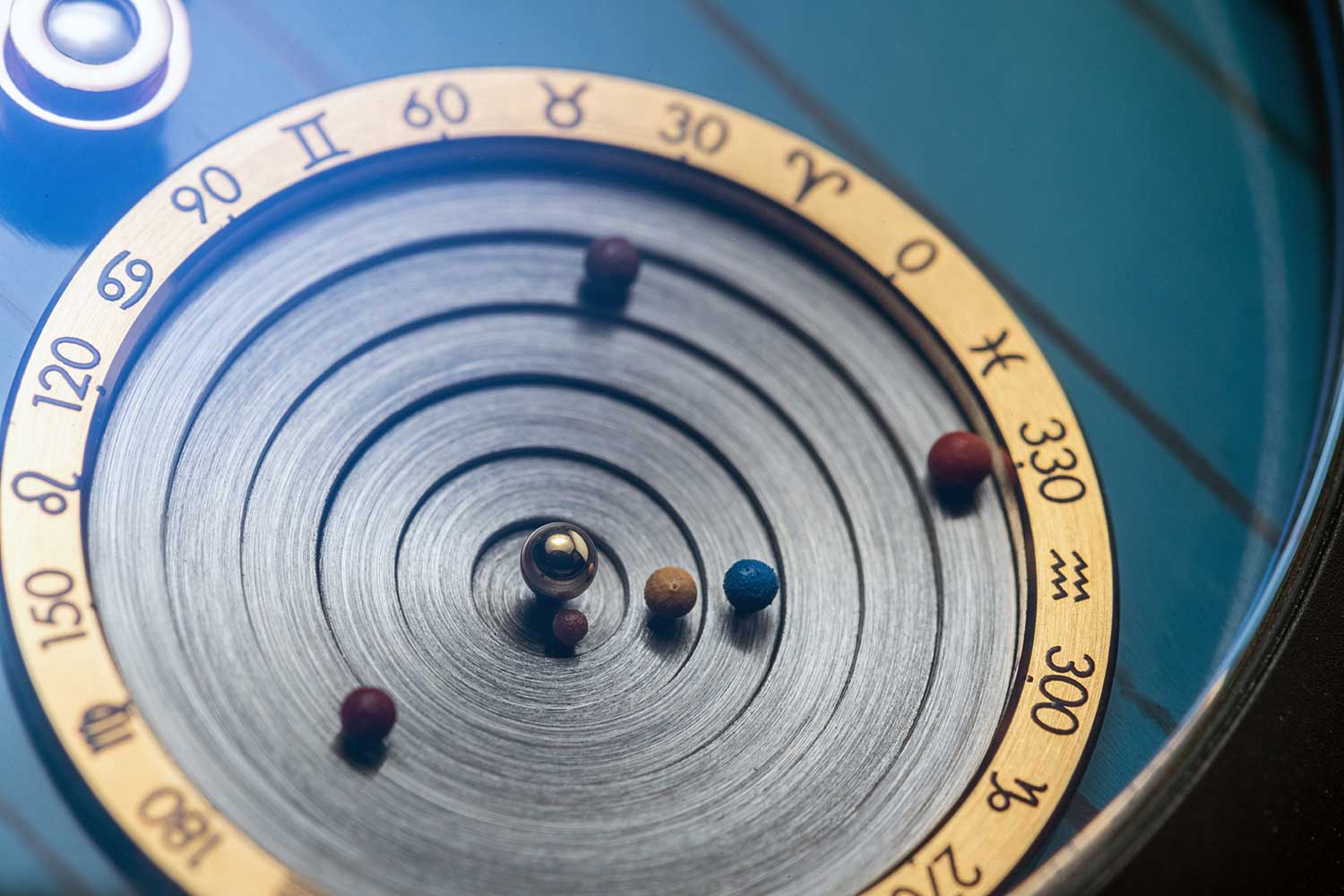
Each disc is a two-level toothed wheel, stacked from small to big with the largest wheel carrying Saturn at the topmost level
And then you can imagine that those discs to which each planet is attached have teeth underneath. They are arranged concentrically from small to big [inverted pyramid], with the largest wheel carrying Saturn. And next to this, there is an exact opposite gear train that is arranged on an arbour from big to small. There are seven wheels stacked on top of each other, which is a pyramid wheel, we call it. The smallest and uppermost wheel drives the largest disc carrying Saturn. Each subsequent gear in the stack is larger than the one above it which results in slower rotational speeds for the larger gears in the stack. These larger gears in turn drive the smaller gears [in the inverted pyramid] and vice versa, increasing or decreasing their rotational speeds to simulate the varied orbital speeds of the planets in relation to the sun.
This interview has been edited and condensed.













